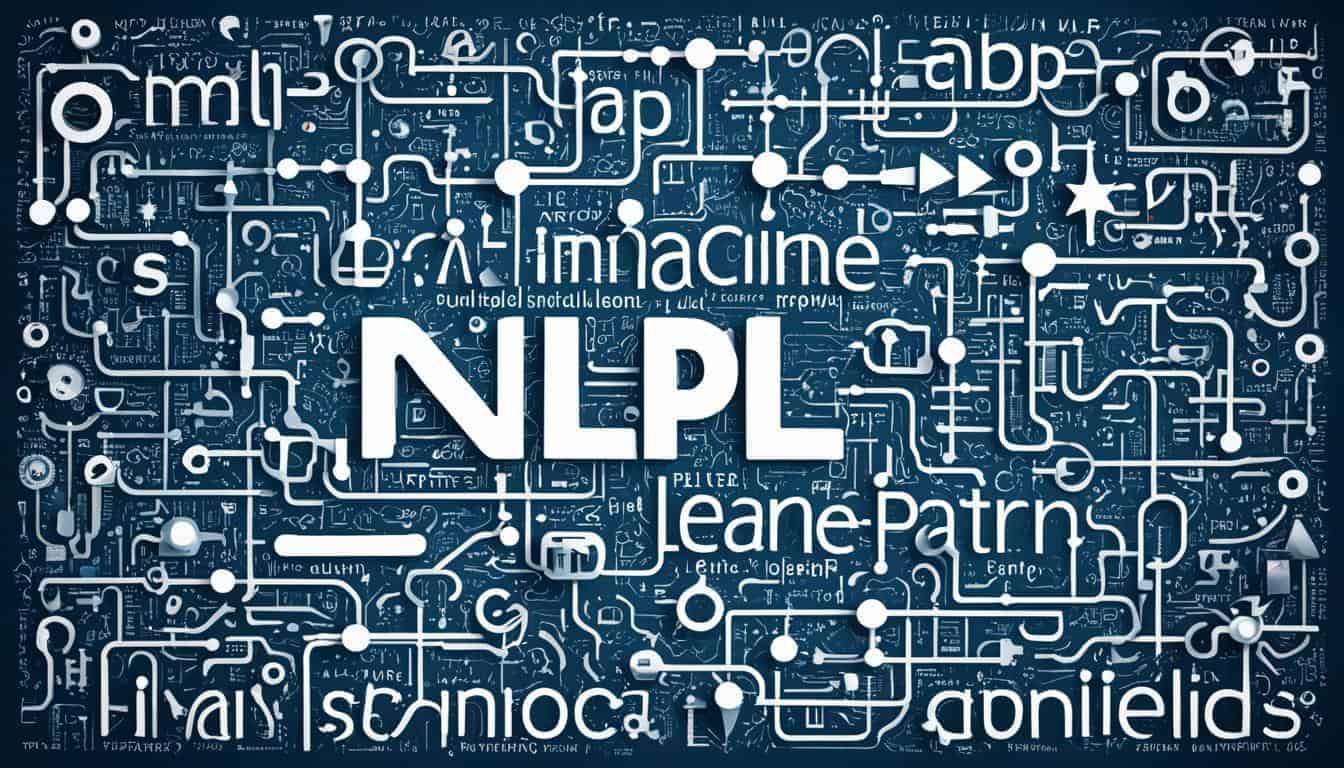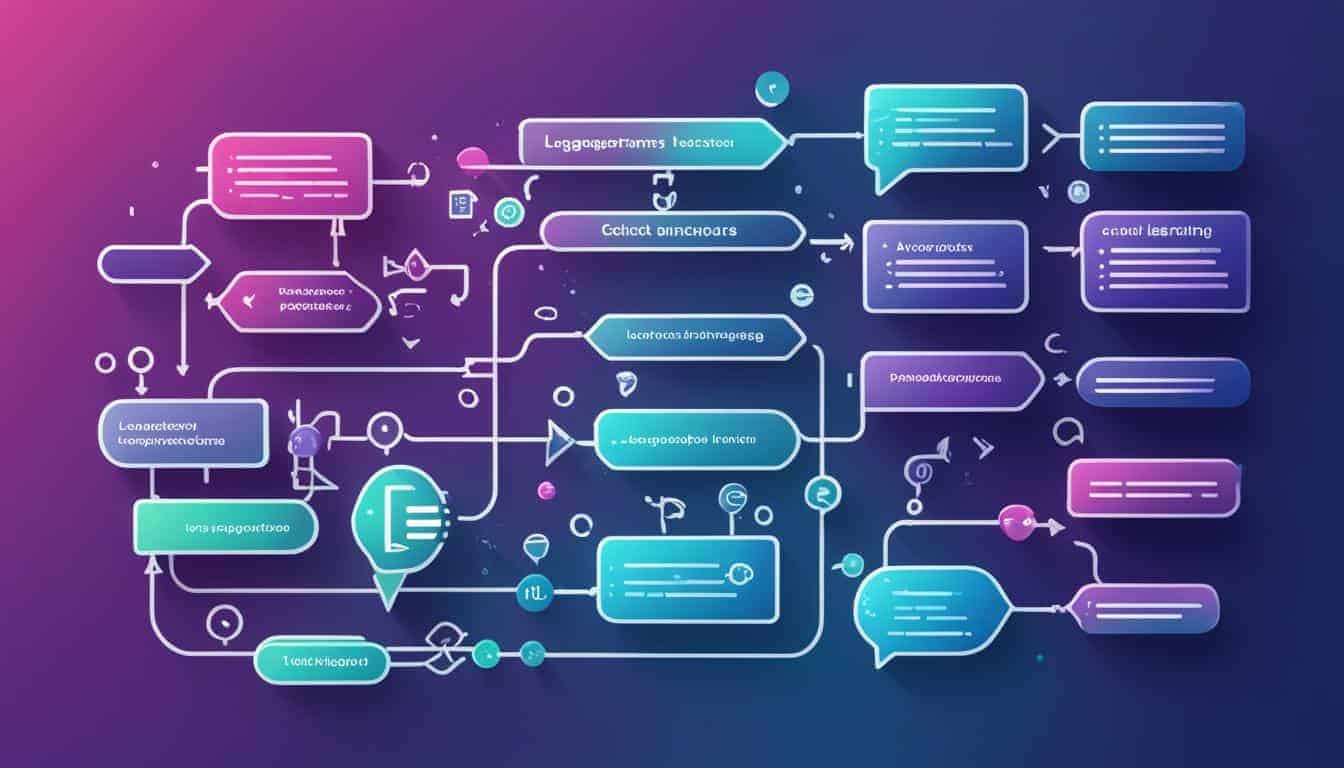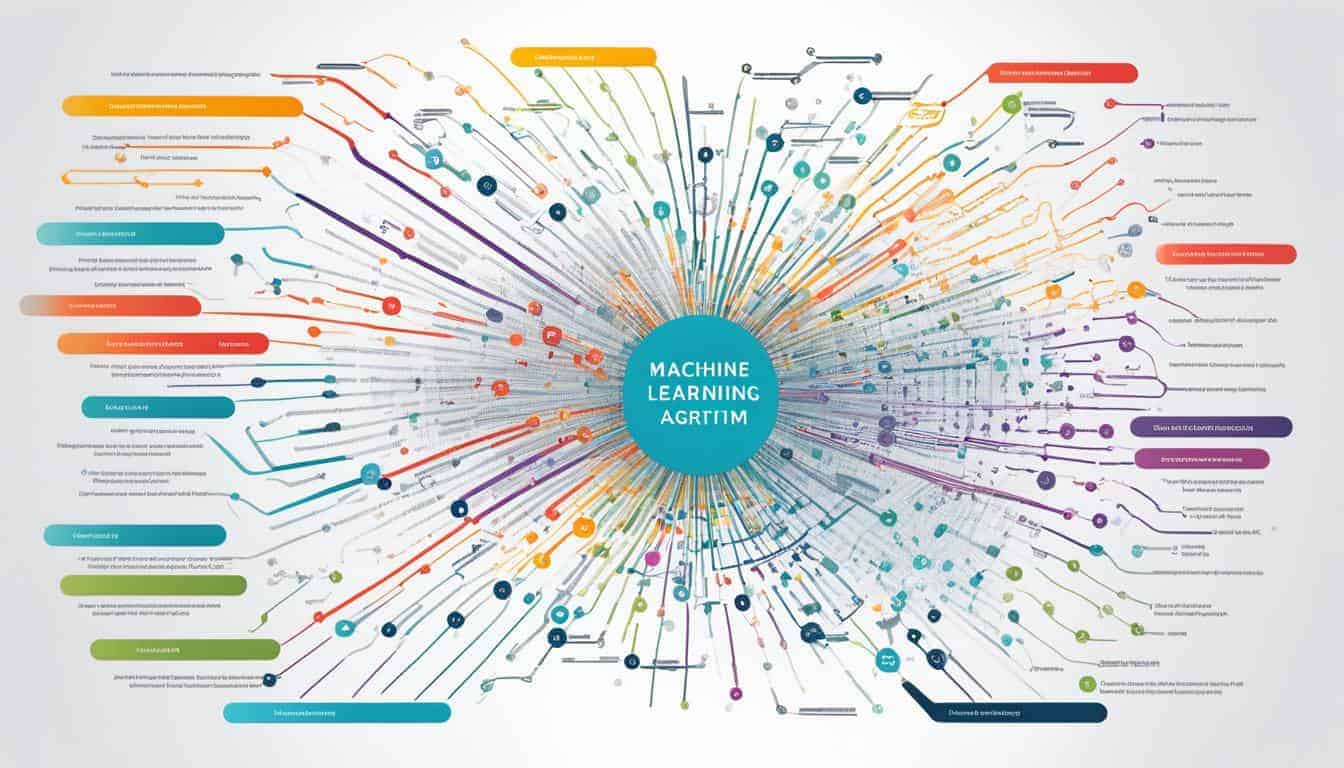NLP Machine Learning Text Detection Techniques In Natural Language Processing

Did you know over 90% of online data is unstructured text? This fact shows how important natural language processing (NLP) and machine learning are. They are changing how we use and understand digital content.
NLP machine learning in text detection is changing many industries. It powers smart chatbots and makes search engines better. Now, text mining and analytics are key to finding important info in huge amounts of data.
Natural language processing and machine learning are making text analytics better. They help computers understand human language very well. This leads to many uses, like figuring out feelings in text and sorting content automatically.
We will look into how NLP and machine learning work together to use text data better. We’ll see different methods and how they are used in real life. This will show us the future of finding and analyzing text.
Key Takeaways
Over 90% of online data is unstructured text
NLP and machine learning are key for text detection and analysis
Text mining and analytics find important info in unstructured data
NLP makes computers better at understanding human language
Uses include chatbots and improving search engines
NLP and Machine Learning
NLP is linguistics and computer science. It makes machines understand human language. It’s cool because it makes computers talk to us smarter.
What is NLP
NLP teaches computers to read and understand human languages. It’s like teaching a computer to be human! This is behind voice assistants and language apps. It’s to bridge the gap between human and machine communication, addressing the complexities of human communication.

Machine Learning in NLP
Machine learning is the secret sauce to NLP’s success. It lets computers get better at language over time. By learning from a lot of data, machines pick up language patterns and rules. This helps them understand context and subtle text nuances.
Why Text Detection is important in NLP
Text detection is key to NLP. This includes technologies like speech recognition, which convert spoken language into written text. It finds and makes sense of written words in many forms. This includes handwriting or finding text in images. Without it NLP systems wouldn’t work with real language data.
Understanding Text Detection in NLP
Text detection is key in natural language processing (NLP). Text detection helps in processing both written and spoken language, converting them into useful information. It helps pull out important info from lots of text. This tech changes raw text into useful info for many industries.
Text detection finds and highlights important parts in big texts. It’s a big step in tasks like figuring out feelings in text and sorting text types. For example, in a project with 50,000 IMDB reviews, it was vital for spotting user feelings.

Text analytics use both rules and machine learning. This mix makes them very good at finding the right info fast. First, text is broken into smaller parts. Then, the magic of NLP happens with feature extraction and analysis.
Text detection in NLP has many uses. It changes how companies deal with customer feedback, sort news, and watch social media. These techs have changed how we use written info, making it easier to understand and use.
Supervised Machine Learning for NLP
Supervised machine learning is really cool for Natural Language Processing (NLP). It uses labeled data to train models for certain language tasks. Let’s look at some important techniques in this area.
Support Vector Machines
Support Vector Machines are top-notch for text classification and figuring out sentiment. They find the best line between different kinds of text. For instance, they can tell apart positive and negative reviews very well.
Bayesian Networks
Bayesian Networks are awesome for dealing with the unknown in language. They use probability to guess what text might say. These networks can sort documents, block spam, and even help with translating languages.
Neural Networks and Deep Learning
Neural networks have changed the game in NLP. Models like BERT and GPT can understand complex language and write like humans. They’re used for many tasks, from sorting text to figuring out feelings in text.

Supervised machine learning is key for many NLP tasks. It’s used for sorting text, finding named entities, and understanding sentiment. The models learn from labeled data to make good guesses on new text. This has made us much better at understanding human language.
Unsupervised Machine Learning for NLP
Unsupervised learning is exciting in natural language processing. It finds hidden patterns in text data without labels. Techniques like clustering group similar documents together.
Topic modeling is great for analyzing big text collections. It finds abstract themes in documents. For example, it can find categories like “sci.space” or “comp.graphics” in the 20newsgroups dataset.
Choosing the right settings is crucial for topic modeling. I start with 30 topics to capture various themes. A significance threshold of 0.05 helps check topic relevance.
Word vectors have changed how I do NLP tasks. They are dense representations that show how words relate to each other. Tools like word2vec and GloVe are key in my toolkit. They help with more detailed text analysis than old methods.
I’ve looked into many NLP techniques and I’m glad to share the main ones used in text detection. These are the ones that machines use to understand and work with human language.
Tokenization
Tokenization is a first step in many NLP tasks. It splits text into smaller chunks, like words or subwords. This is especially important for languages that don’t have word boundaries.
This helps algorithms to work better with text. It gets them ready for deeper analysis.
Part of Speech Tagging
Part of speech tagging is another big one. It labels words in a sentence based on their grammatical roles. This is the key to understanding text structure and meaning.
Accurate part of speech tagging really improves many NLP tasks. This includes machine translation and sentiment analysis.
Named Entity Recognition
Named entity recognition (NER) finds and classifies named entities in text. This includes people, organizations and locations. I’ve seen NER used a lot, from information extraction to question answering.
It’s good for extracting structured data from unstructured text.
These top techniques often use machine learning models trained on large datasets. They work across languages and domains, so very useful in NLP. As NLP gets better, these basic ones will remain the foundation for text detection.
Deep Learning Models for NLP
Introduction to Deep Learning in NLP
Deep learning models have revolutionized the field of natural language processing (NLP) by enabling computers to understand and generate human language with unprecedented accuracy. These models are capable of learning complex patterns and relationships in language data, allowing them to perform tasks such as sentiment analysis, named entity recognition, and machine translation with high precision. By leveraging vast amounts of training data, deep learning models can grasp the nuances of natural language, making them indispensable in modern NLP applications.
One of the key strengths of deep learning in NLP is its ability to handle the intricacies of human language. Unlike traditional machine learning algorithms, deep learning models can automatically extract features from raw text data, eliminating the need for manual feature engineering. This has led to significant advancements in various NLP tasks, including text classification, entity recognition, and sentiment analysis. In this section, we will explore some of the most popular deep learning models used in NLP and their applications.
Convolutional Neural Networks (CNNs) for NLP
Convolutional neural networks (CNNs) are a type of deep learning model that have been widely used in computer vision tasks such as image classification and object detection. However, CNNs can also be applied to NLP tasks, particularly those that involve processing sequential data such as text. In NLP, CNNs are often used for tasks such as text classification, sentiment analysis, and named entity recognition. The key advantage of CNNs in NLP is their ability to capture local patterns and relationships in text data, which can be useful for tasks that require understanding the context in which words are used.
For instance, in sentiment analysis, CNNs can identify phrases or word combinations that convey positive or negative sentiments. Similarly, in named entity recognition, CNNs can detect and classify entities like names, dates, and locations within a text. By applying convolutional filters to text data, CNNs can effectively capture the hierarchical structure of language, making them a powerful tool for various NLP applications.
Text Preprocessing Techniques
Text preprocessing is a crucial step in NLP pipelines, as it enables machine learning models to understand and process human language data effectively. By transforming raw text into a format that machine learning algorithms can work with, preprocessing ensures that the models can extract meaningful insights from the data. In this section, we will introduce some common text preprocessing techniques used in NLP.
One of the fundamental preprocessing steps is tokenization, which involves breaking down text into smaller units such as words or subwords. This helps machine learning models to analyze text data more efficiently. Another important technique is stop word removal, where common but uninformative words like “and,” “the,” and “is” are filtered out to reduce noise in the data.
Stemming and lemmatization are also widely used preprocessing techniques. Stemming reduces words to their root forms, while lemmatization converts words to their base or dictionary forms. These techniques help in standardizing text data, making it easier for machine learning models to recognize and process different variations of the same word.
By applying these preprocessing techniques, we can enhance the performance of machine learning models in NLP tasks, enabling them to better understand and interpret human language.
Text Detection Sentiment

Sentiment is key in text detection. It’s used in business and healthcare. This detects the emotional tone of text and labels it as positive, negative or neutral.
It’s amazing how it can pick up on subtle feelings and complex language. That’s very useful.
Businesses find opinion mining through sentiment analysis very useful. They can know what customers think, keep an eye on their reputation and make smart decisions. For example the Hedonometer project checks over 50 million tweets a day to see how happy people are.
This is how powerful sentiment analysis is with big data.
Text classification is a big part of sentiment analysis. I’ve seen machine learning models can categorise text by how it feels. These models get better at understanding context over time. Companies use it to see what customers say, read reviews and check social media. This gives them valuable insights on what people think.
Sentiment analysis has many uses. It’s used for social media checks and customer service. As tech gets better I’m looking forward to seeing how sentiment analysis will evolve. It will play a big part in how we understand digital communication.
Text Classification and Categorization
Text classification is important with all the unstructured data we see everyday. Over 80% of all data is unstructured, so categorizing it is key. Machine learning is good for text classification in many places, like emails and social media posts.
Document Categorization
Document categorization makes finding information in big text easier and faster. Machine learning tools like logistic regression and Naïve Bayes classifiers are used. They learn from data to put unstructured text into categories.
Spam Detection
Spam detection is a part of text classification. Algorithms like K-Nearest Neighbors or Stochastic Gradient Descent can sort out unwanted emails. This keeps inboxes clean and makes email better.
Content Filtering
Content filtering uses text classification to control what content people see. It’s really useful for businesses that want to protect their brand or follow rules. Tools like Natural Language Understanding (NLU) can understand different languages and themes, so content moderation is better.
The amount of unstructured data is growing fast. Text classification and document categorization is more important than ever. They save time and make businesses more productive when dealing with lots of text.
Advanced NLP Techniques for Text Detection
I’m excited to explore advanced NLP techniques for text detection. These methods have changed how we understand language. Machine translation is now a $40 billion industry. It’s amazing that Google Translate handles about 100 billion words every day!
Text summarization is another big deal. It makes long documents easy to read, saving time and helping us understand better. Question answering systems are also a big deal. They quickly find specific info in big datasets.
These techniques have big impacts. Facebook uses machine translation to help people speak different languages. eBay uses it to grow global trade. Microsoft even put AI-powered translation on mobile devices, even without the internet. It shows how these NLP techniques are changing how we talk to each other around the world.
